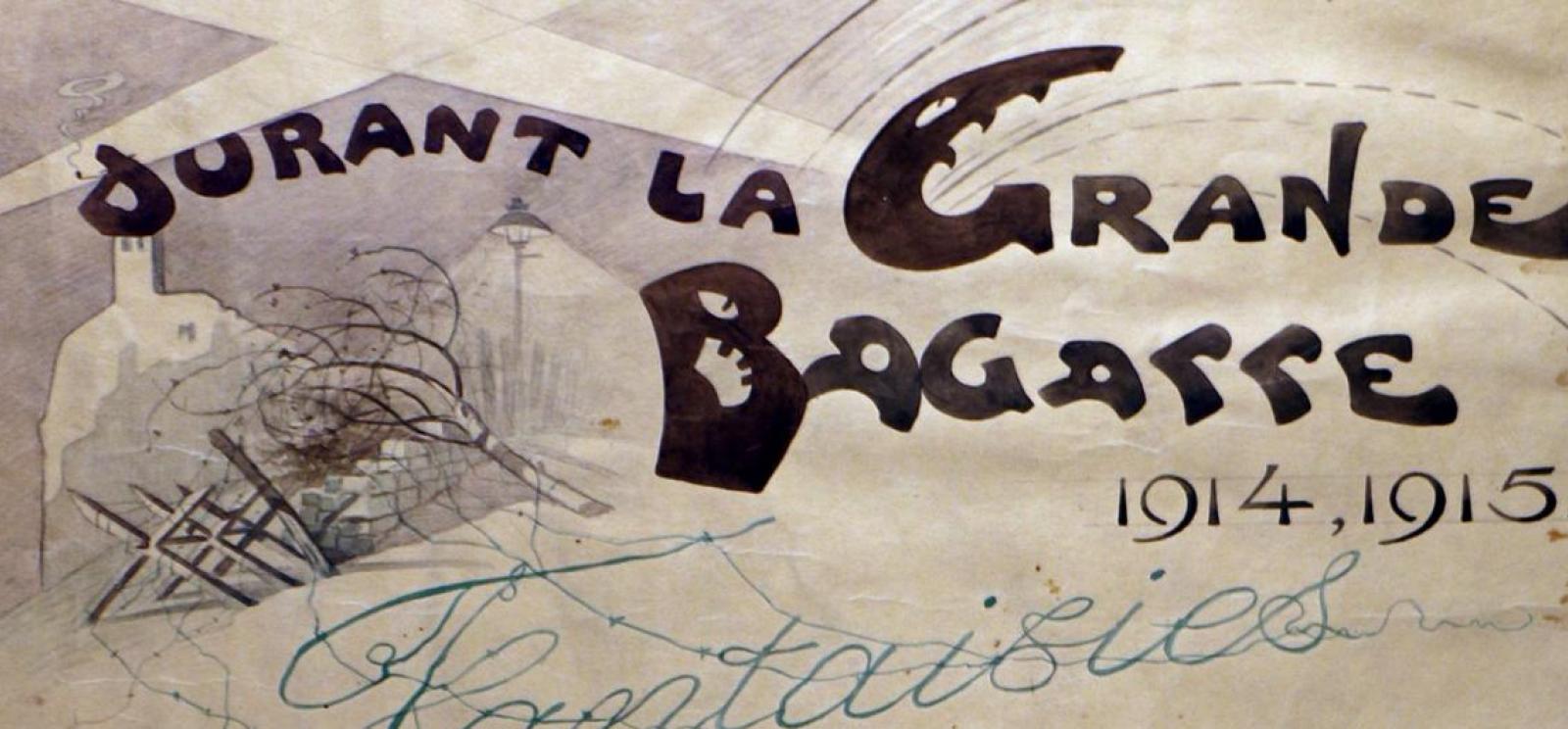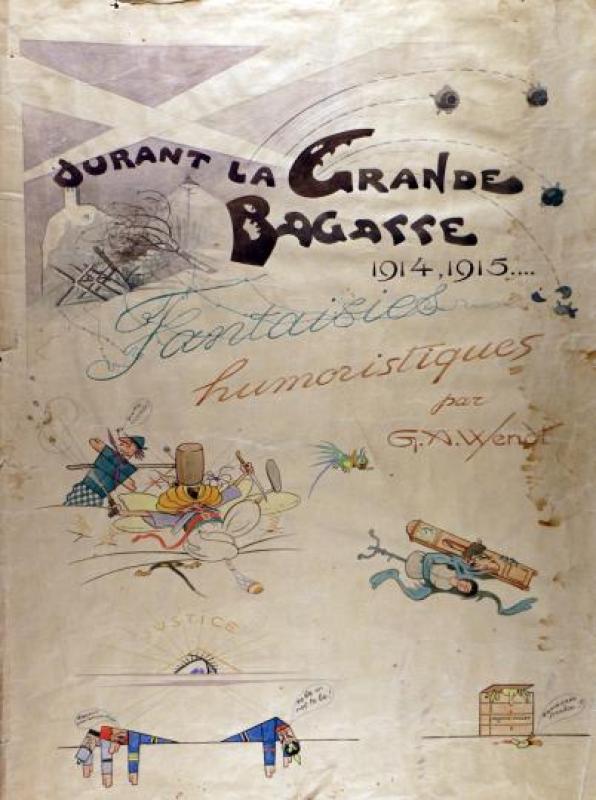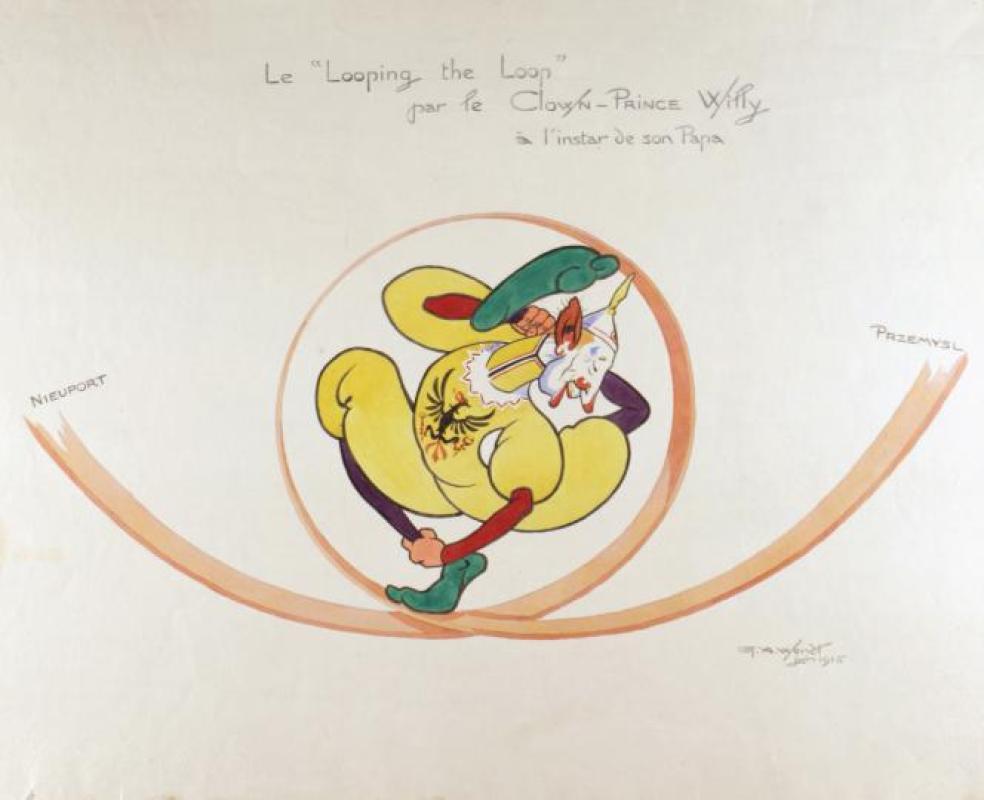
“During The Big Brawl: Humorous Imaginings” (“La Grande Bagarre: Fantaisies Humoristiques”) is a collection of political cartoons created by Gustave A. Wendt between 1915 and 1916. The illustrations are done in pencil, watercolor, India ink, gouache and some colored inks.
These imaginative and colorful images depict the politics and nature of war in comical cartoon form, but their fanciful nature does not lessen their seriousness. The themes of the subjects depicted range from the German Kaiser’s son “Willie” dressed as a clown dancing across Europe, to a skeleton cavalryman, riding a horse newly reclaimed from its grave, holding a lance with the Kaiser’s head tied to it. Humans, animals, puppets, and ghouls are used to communicate what war brings to humanity—from its absurdity to its brutality.
Humor is at the heart of these drawings, and Wendt’s artistic style provides a colorful palette for his imagination, but the humor contends with the realities of human behavior at its most irresponsible and short-sighted.

